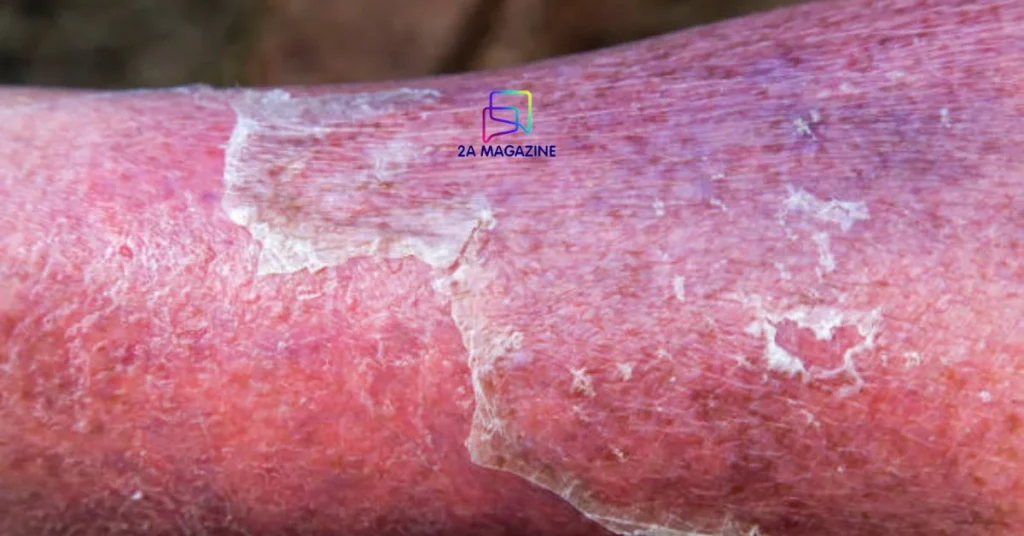Introduction to Cellulitis
Cellulitis is a skin infection that can sneak up on anyone, often without warning. It occurs when bacteria invade the deeper layers of the skin, leading to inflammation and discomfort. While it might sound alarming, understanding cellulitis can help demystify this condition and empower you to take control of your health.
Imagine waking up with redness or swelling in an area of your body that feels warm to the touch – that’s how many people first notice cellulitis. Whether you’re dealing with it directly or just want to be informed for future reference, knowing more about this common yet serious condition could make all the difference. So let’s dive into what cellulitis really is and uncover everything you need to know about its causes, symptoms, treatments, prevention strategies, and more!
Want more clarity? This related post has the extra detail you’re looking for.
Causes and Risk Factors
Bacteria entering through minor skin injuries like scrapes or bug bites is the main cause of cellulitis. Staphylococcus and Streptococcus are the most common culprits behind this infection.
Certain risk factors can increase your likelihood of developing cellulitis. Individuals with weakened immune systems due to conditions like diabetes or HIV face a higher risk.
Skin conditions such as eczema or athlete’s foot can create openings for bacteria, making those affected more susceptible. Obesity also plays a significant role in predisposing individuals to cellulitis because it often leads to poor circulation and skin integrity issues.
Additionally, having a history of previous infections increases vulnerability. If you’ve had cellulitis before, you might find yourself at an elevated risk for future occurrences. Understanding these causes and risks helps in taking necessary precautions against this potentially serious condition.
Symptoms of Cellulitis
Cellulitis often begins with noticeable redness and swelling in the affected area. This inflammation can spread quickly, creating a warm sensation that may feel uncomfortable.
You might also experience tenderness or pain. Simple movements could become challenging as the skin becomes more sensitive to touch.
Additionally, some people develop blisters or pus-filled bumps on their skin, indicating a possible infection beneath the surface.
Fever is another common symptom; it signals your body’s response to an infection. Chills and fatigue may accompany this fever, leaving you feeling unwell overall.
In severe cases, lymph nodes near the infected area can swell and become painful as they work hard to fight off bacteria. Spotting symptoms early plays a key role in making treatment more effective.
Treatment Options for Cellulitis
Treatment for cellulitis typically begins with antibiotics. These medications help to fight the bacterial infection effectively. Your healthcare provider may prescribe oral antibiotics for mild cases.
For more severe infections, intravenous (IV) antibiotics might be necessary. This often requires a hospital stay. The type of antibiotic used is selected based on the exact bacteria responsible for the infection.
In addition to medication, rest is crucial. Elevating the affected area can reduce swelling and promote healing.
Over-the-counter pain relievers such as ibuprofen or acetaminophen may provide some comfort during recovery.
In rare cases where cellulitis does not respond to treatment, surgical intervention could be required to drain abscesses or remove infected tissue.
Following your doctor’s instructions closely ensures a smoother healing process and reduces complications associated with this condition.
Go deeper into the topic—click here to explore more engaging reads.
Preventing Cellulitis
Preventing cellulitis starts with good hygiene practices. Regularly washing your skin can help eliminate bacteria that might lead to infection. It’s important to care for wounds carefully—clean them right away and keep them properly protected.
Moisturizing dry skin is another key step. Cracked or flaky skin provides an entry point for germs, so keeping it hydrated reduces this risk. Wearing protective clothing when participating in activities that could cause injury also helps shield your skin.
Maintaining a healthy lifestyle supports your immune system, making it stronger against infections like cellulitis. Balanced nutrition and regular exercise boost your overall health.
If you have existing conditions such as diabetes or lymphedema, managing these effectively is essential. Regular check-ups with healthcare providers can keep complications at bay while ensuring early intervention if needed.
When to Seek Medical Attention?
Knowing the right time to consult a doctor for cellulitis is vital for effective care. If you notice rapid swelling or redness spreading across your skin, it’s time to consult a healthcare professional.
Fever can be another red flag. A high temperature often indicates that the infection may be worsening and needs immediate intervention.
If you experience intense pain in the affected area, don’t hesitate. Severe discomfort might suggest complications requiring prompt treatment.
Additionally, if you have underlying health conditions such as diabetes or a weakened immune system, seek help sooner rather than later. Those with these issues are at higher risk of serious complications from infections like cellulitis.
If symptoms persist despite initial treatment or worsen over time, make an appointment right away. Early detection and proper care can significantly impact recovery outcomes.
Living with Cellulitis: Coping Tips
Living with cellulitis can be challenging, but there are ways to ease the experience. Start by keeping your affected area clean and dry. Gentle washing can help prevent further infections.
Rest is crucial. Elevate the swollen limb whenever possible to reduce swelling and improve blood flow. This simple step makes a difference in recovery.
Drinking enough water and eating nutrient-rich foods helps keep your immune system strong and supports recovery. Consider using over-the-counter pain relievers for discomfort. Always check with your healthcare provider before starting any medication.
Connect with support groups or online communities where you can share experiences and advice with others facing similar challenges. Simply realizing that others are going through the same thing can bring significant comfort.
Keep track of symptoms changes in a journal. This information will assist healthcare providers if complications arise during treatment.
Conclusion
Cellulitis is a serious skin infection that requires awareness and prompt treatment. Gaining insight into what causes it, how it presents, and available treatments puts you in a stronger position to manage your well-being. Identifying what increases your risk and taking steps to prevent it is essential.
If you or someone you know experiences signs of cellulitis, seeking medical attention promptly can make a significant difference in recovery time. Living with cellulitis can be challenging, but coping strategies exist to help manage the condition effectively.
Staying informed about this common yet potentially dangerous infection will better equip you for your journey toward healing and wellness. Remember that knowledge is power when it comes to health matters like cellulitis.
Handpicked for you—check out this week’s featured post.







